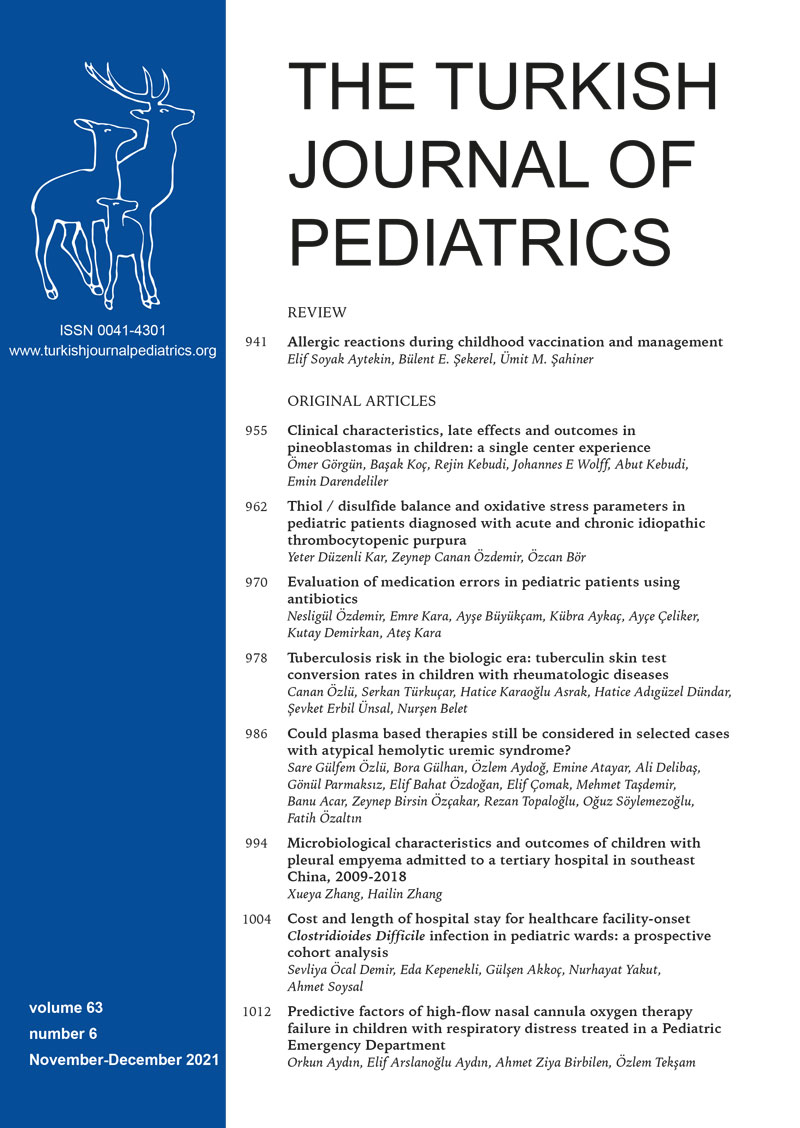Abstract
Background. The widespread use of biological treatments has increased the frequency of opportunistic infections such as tuberculosis (TB). The primary objective of our study was to determine the rate of tuberculin skin test (TST) conversion during biological therapy. The secondary objective was to monitor the side effects related to isoniazid (INH) prophylaxis, in the selected subgroup.
Methods. Children with rheumatologic diseases receiving treatment with tumor necrosis factor-alpha (TNF-α) inhibitors, and tocilizumab and canakinumab were included in the study. If baseline screening was negative, TST was performed annually after initiation of biologic therapy. TST conversion was accepted as an increase of at least 6 mm and becoming positive or an increase of 10 mm or more, even in the absence of positivity.
Results. 121 patients (female n: 63, 52%) were included in the study. The mean follow-up period was 26.10±14.8 months. 85 of the patients were using TNF-α inhibitors and 18 tocilizumab, and 18 canakinumab. Forty patients had positive TST before biological agents and received chemoprophylaxis with INH. The rate of TST conversion among the 3 biological agents was not statistically significant (20.4% of TNF-α inhibitors, 25% of canakinumab and 33.3% of tocilizumab users). All patients with LTBI received INH prophylaxis, and none of them had active TB.
Conclusions. There was no statistically significant difference among the three biological agents, regarding the seroconversion rates. Patients receiving tocilizumab and canakinumab should also be screened for TB during follow-up. INH related side effects are rare.
Keywords: TNF-α inhibitors, biological agents, canakinumab, children, tocilizumab, tuberculosis
Copyright and license
Copyright © 2021 The Author(s). This is an open access article distributed under the Creative Commons Attribution License (CC BY), which permits unrestricted use, distribution, and reproduction in any medium or format, provided the original work is properly cited.














